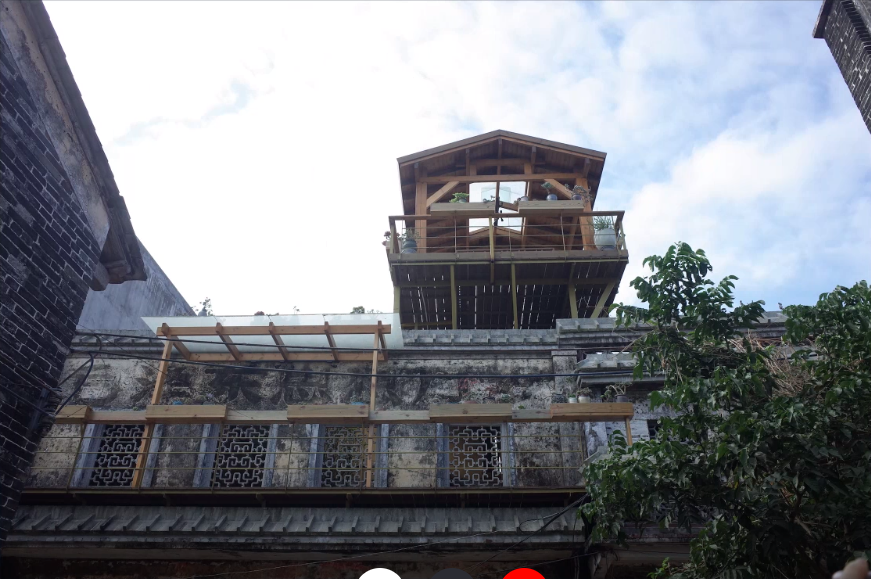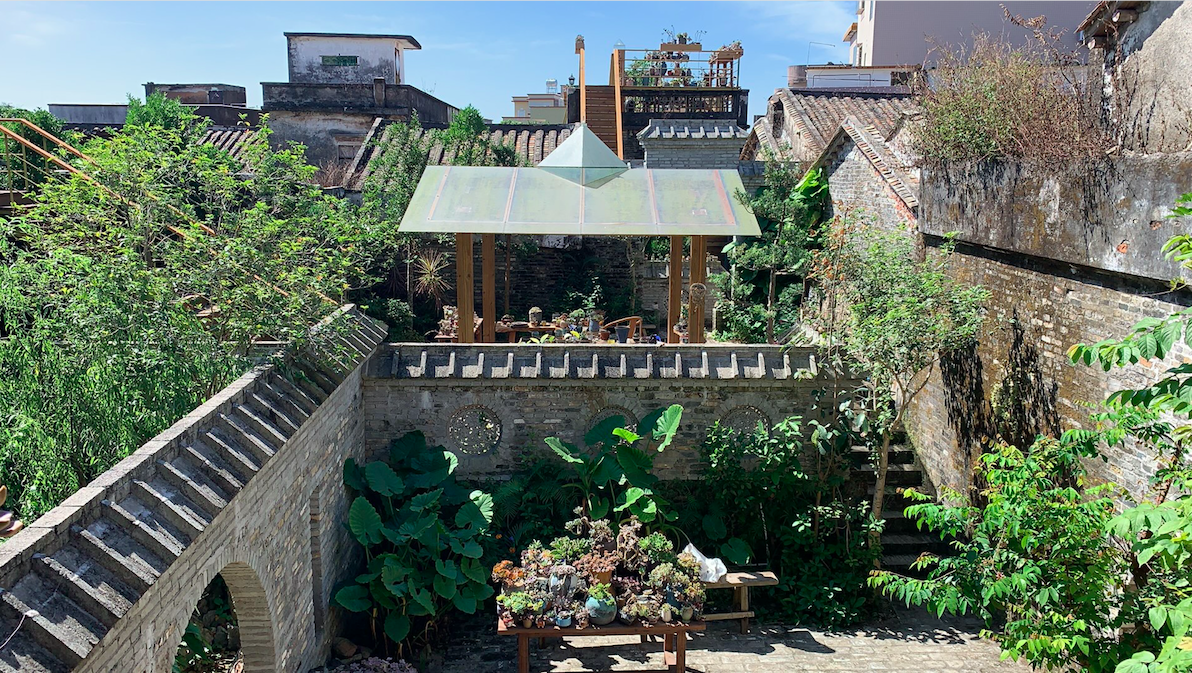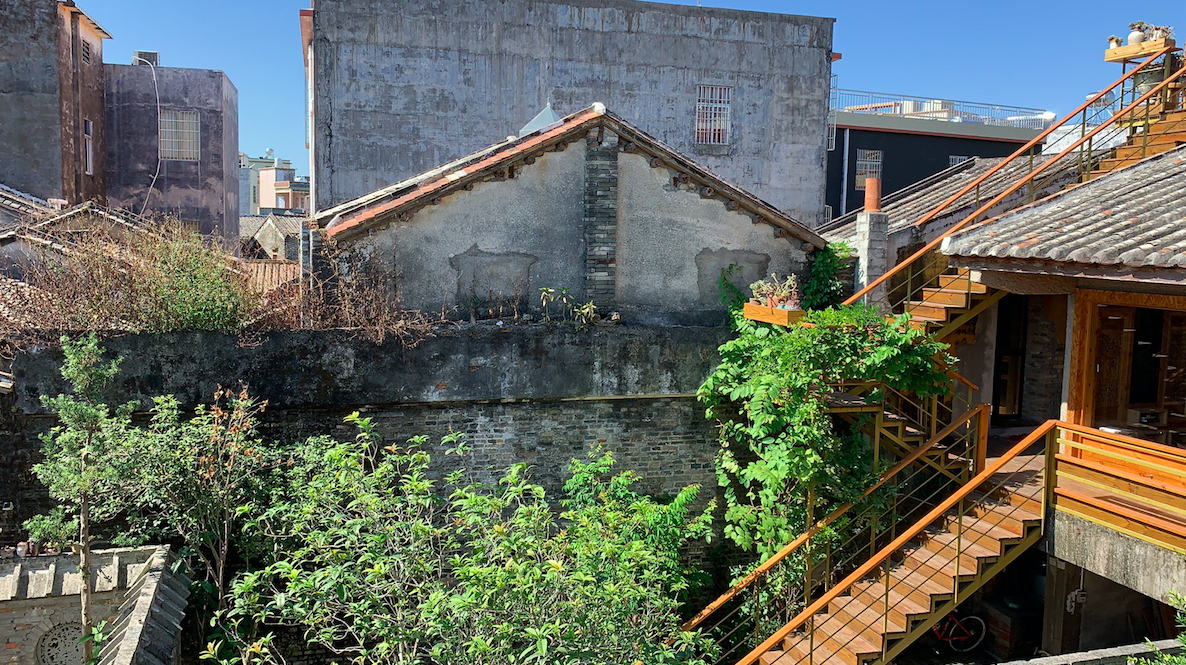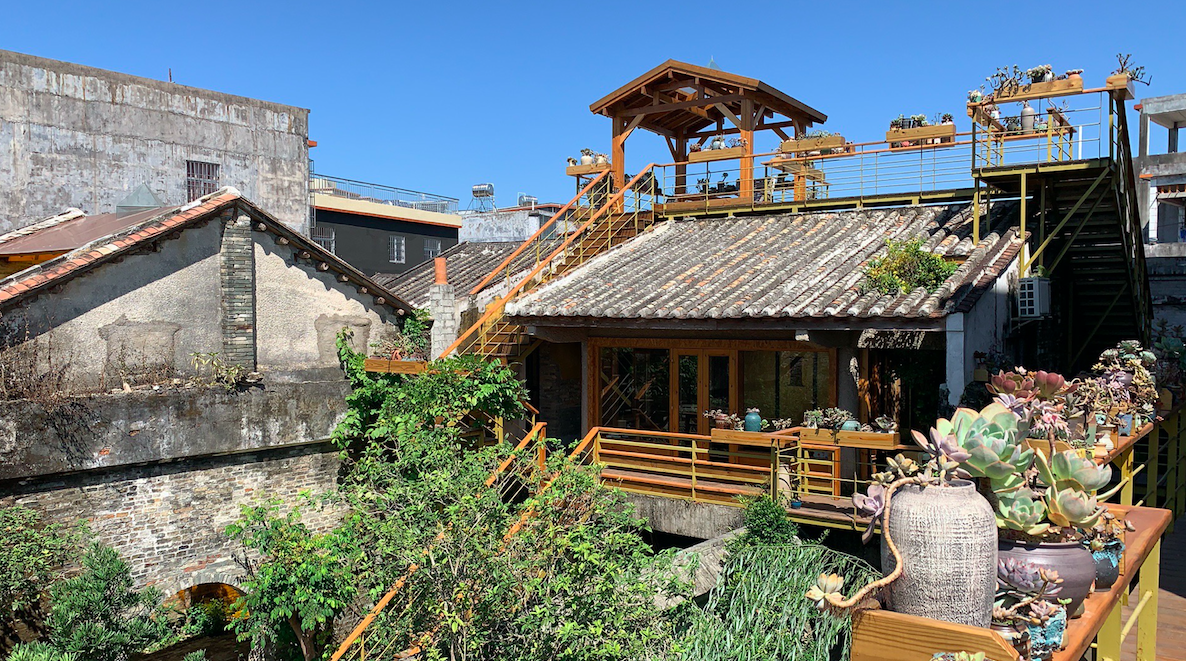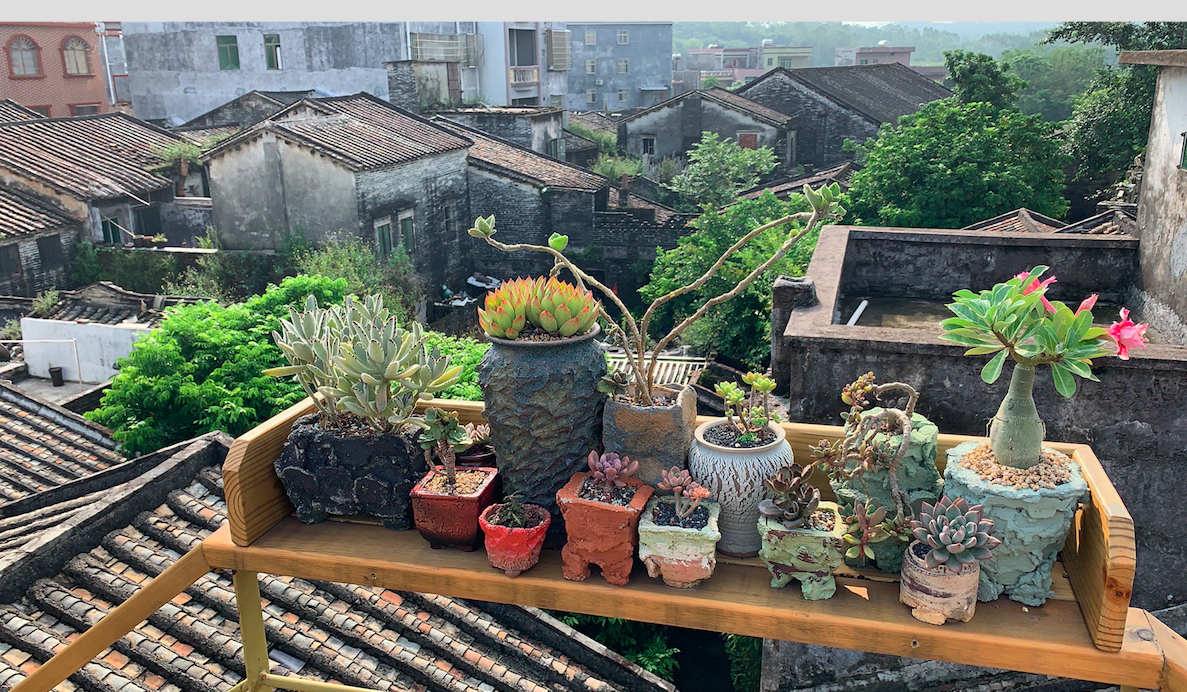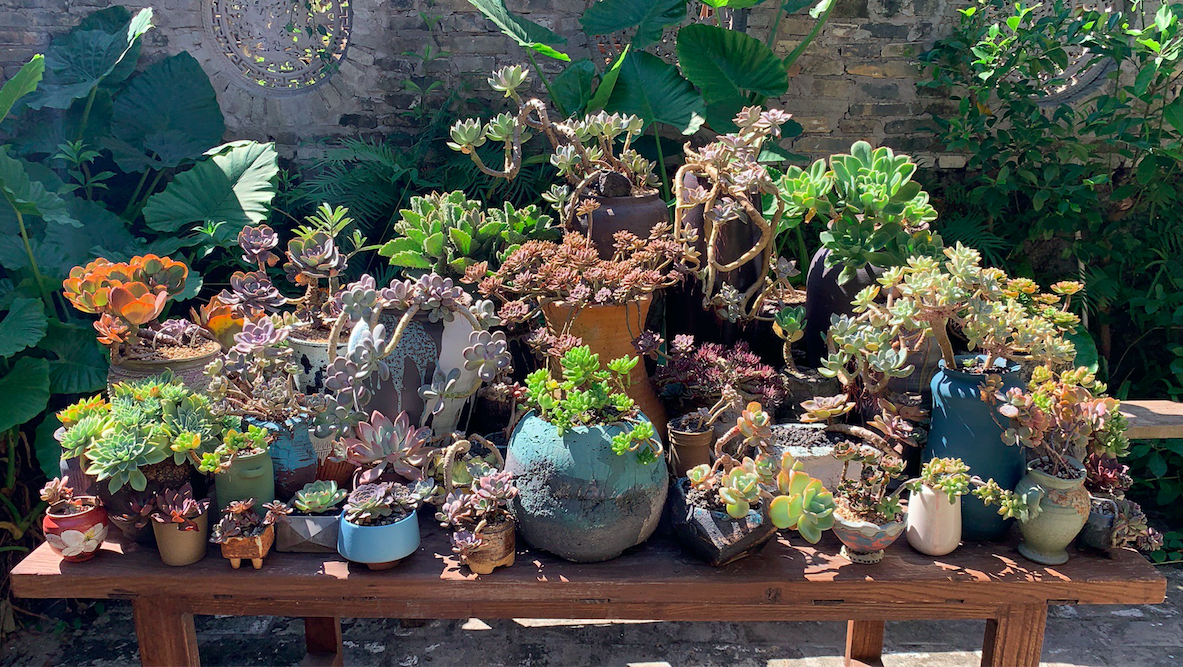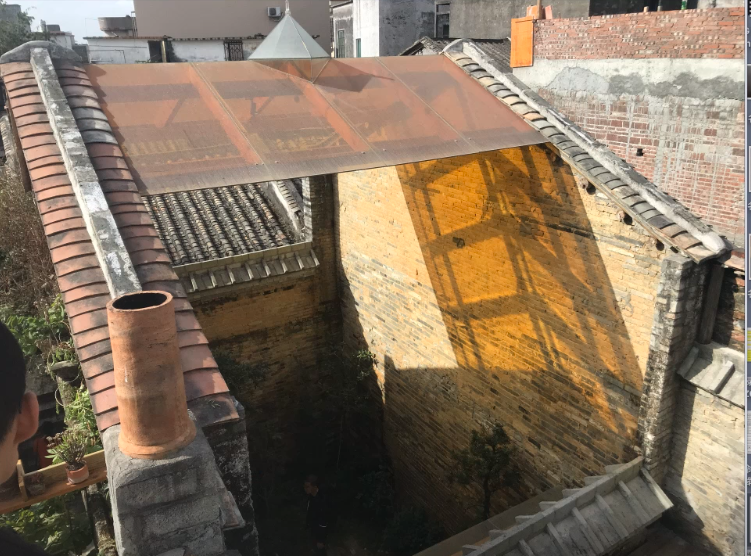Gu Garden
In 2008, Zheng Guogu returned to his birthplace Chengcun in Yangxi, some 30 kilometers from the city of Yangjiang. The derelict former home led him to consider restoring it. Chengcun has now become an industrial town, with its oldest street remaining what it looks like in the past, where his home is located. Observing from the balcony on the second floor, people’s life on the street seems to be as usual without too much impact from the outside world; the old building also appears to be sealed in time from the late 1970s, its walls still bear the marks of the slogans from the cultural revolution.
Zheng Guogu converted the disused pigsty in the building into a stage for the first few years, where his father Zheng Daoxing and his Sihuoju [1]
could gather to rehearse and perform, and the place was becoming lively. Since 2018, a glass pavilion with a golden pyramid was built in the courtyard, then another one on the rooftop. Swimming fish, pond, willow, and other trees are slowly altering the atmosphere of the courtyard, passages extend along with the architectural form of the old building, climbing upon the walls like a twisting vine that leads to all directions and secluded corners, as if they were the winding paths in a Chinese garden.
Zheng Guogu named it Gu Garden. “Gu” in Chinese has the meaning of “grain”, implicating the village context where this garden is situated; it also corresponds to the word “Gu” in Zheng Guogu’s name. “Every name brings a specific vibration”, Zheng Guogu associated the sonic vibration of the name “Gu Garden” with the heart chakra detected in his art works Visionary World in a Changing State of Mind.
Without doubt, Gu Garden has assimilated Zheng Guogu’s years of experience in the explorations at Liao Garden without repeating the form, instead, it has transformed and replanted the understanding and awareness of a living ecosystem acquired in Liao Garden into a daily space in a village, in order to evoke a re-imagining of village living spaces envisioned by human’s wisdom in the historical process. In response to the limited living space characteristic to these types of village houses, Zheng Guogu developed a structure that is more three-dimensional: to echo with Liao Garden, it also has the elements of tea, tree, pond, fish in its environment, but its layers of perceptions are denser and more blended with the principle of “borrowed sceneries” and “folded sceneries”.
From The Age of Empire, Seven Condos to Liao Garden and Gu Garden, from agricultural land to the city and the village, for Zheng Guogu, the transformation between daily space and art space goes on without a stop. The artworks become the crystals endlessly refracting from this brimful flow of perceptions while testing the energies in his surroundings and making us think: how to return to creation and existence itself?
A world without symbols is a world of a monocrystal. In this world, there is no creator, but only creation itself.
[1] Sihuoju refers to any informal group or gathering of Cantonese opera performers to sing for the local community or for self-entertainment.
Text: Hu Fang
Text © 2020 the Author and The Pavilion
Photo by Zheng Guogu
Courtesy of the Artist and Vitamin Creative Space
